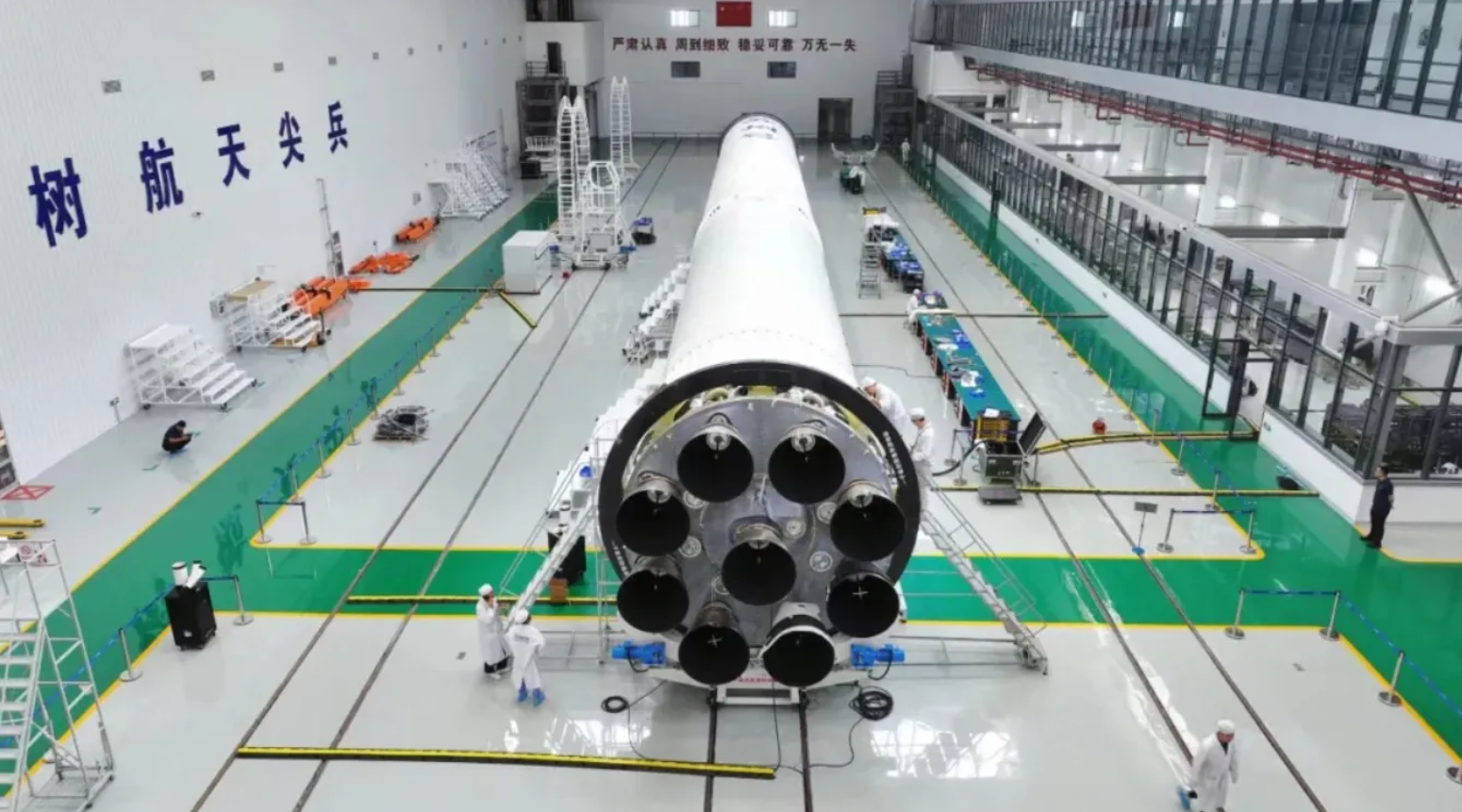
China’s Falcon 9 unexpectedly launched, crashed and exploded (video)
The Chinese company Space Pioneer has conducted a spectacular bench test of the Tianlong-3 launch vehicle with a reentry first stage. During the burning of the engines, the rocket spontaneously broke away from the launch pad, rose several hundred meters, and then fell and exploded 1.5 km from the test site. According to Space Pioneer, the accident was caused by a “structural failure” at the junction between the rocket body and the test stand.
On Sunday, June 30, Space Pioneer conducted a fire test of the first stage of its Tianlong-3 launch vehicle at a test site in Gongyi County, Henan Province.
During a static fire test, the first stage of the Tianlong-3 unexpectedly lifted off. About 50 seconds after liftoff from the launch pad, it crashed to the ground with a large supply of kerosene-oxygen fuel on board. This led to a powerful explosion. During a real orbital flight, the first stage of Tianlong-3 would have to operate for several minutes.
Wow. This is apparently what was supposed to be a STATIC FIRE TEST today of a Tianlong-3 first stage by China’s Space Pioneer. That’s catastrophic, not static. Firm was targeting an orbital launch in the coming months. https://t.co/BY9MgJeE7A pic.twitter.com/L6ronwLW1N
— Andrew Jones (@AJ_FI) June 30, 2024
The accident occurred at 15:43 local time (10:43 Moscow time). The cause of the accident was a “structural failure” at the junction between the missile body and the test stand. Because of this, it broke away from the site and took off. Shortly after takeoff, the rocket’s onboard computer automatically shut down its engines and it crashed in a mountainous area, about 1.5 km from the test site. The force of the impact on the ground led to the destruction of the body. Fortunately, no one was injured. The company reported that the engines developed a thrust of 820 tons during the test.
The Tianlong-3 is a liquid-fueled launch vehicle that is similar in its characteristics to SpaceX’s Falcon 9. The Chinese rocket has a diameter of 3.8 meters and a takeoff weight of 590 tons. It is capable of launching up to 17 tons of cargo into low Earth orbit and up to 14 tons into solar-synchronous orbit.
Space Pioneer plans to eliminate the defects as soon as possible and then start creating and testing new products. Earlier this month, the company received $207 million in new financing.
The incident occurred shortly after China’s high-profile success in returning the first-ever samples of the lunar backside to Earth using the Chang’e-6 spacecraft. The country is actively developing its space program, moving towards ambitious goals in the field of satellite technology, lunar and asteroid exploration. In 2023, China carried out 67 space launches, and in 2024, it plans to carry out up to 100 space missions.

